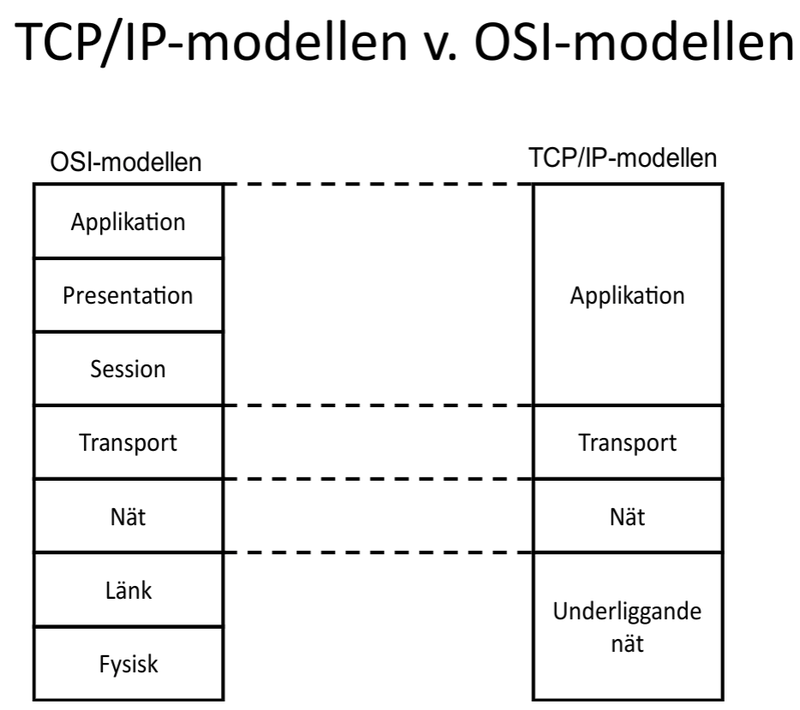Datorkommunikation
Här är mina datorkom anteckningar
Ludde127
2023-01-11
L
OSI Layers
- Physical layer, the actual cable or ether the information travels trough.
- The link layer. This contains two sublayers, the medium access control (MAC) layer and the logical link layer LLC. This handles node to node communications on the network. Can have error correction and defines flow control between the nodes.
- MAC layer - controls which nodes that are allowed to access the medium and which are allowed to transmit data.
- LLC layer - Identifies and encapsulates network layer protocols and error checks and synchronizes frames.
- The network layer connects different networks to each other and thus allows data transfer between nodes of different networks. This handles routing and can potential set a MTU (maximum transmission unit ).
- The transport layer provides the needed protocols for transferring large amounts of data and this is where UDP and TCP work. This layer is also responsible to segment data whose size exceeds the network layers MTU. ARP and many other protocols operate on this layer.
- The Session Layer describes a session between computers (>=2). Sessions are used when data is expected to be sent over a longer time span, examples are FTP and streaming. The layer is also responsible for gracefully end sessions.
- The presentation layer formats data to an correct format for other protocols and underlying layers, this layer also handles compression and encryption and their inverses.
- The Application Layer is the closest layer to end users as other programs which uses the Internet builds their programs on this layer, common protocols at this layer are HTTP, FTP, SMB/CIFS, TFTP and SMTP.
Link protocols
Some other important tasks delegated to link protocols are the ability to:
- Frame the incoming or the data for sending (Adding or removing flags between data-frames).
- Error detection, link protocols shall also be able to detect bit errors using redundant bits.
- Error Handling, the protocols should be able to handle detected bit errors.
- Flow control, should ensure that the sender gets frames in a correct rate and is not overran by frames.
OSI vs TCP/IP

The OSI model has 7 different layers which covers more than TCP/IP.
TCP/IP do not cover layer 1 or 2 but can handle all layers above OSI 2. Layer 3 and 4 are have the same meaning in TCP/IP model while layer 5,6,7 in OSI are all collectively grouped into the application layer in TCP/IP.
Tenta 2022
Card: 1/16
Score:
0.0
Press to start
Lite datorkom flashcards
Card: 1/49
Score:
0.0
Press to start
Övningar 1
Card: 1/8
Score:
0.0
Press to start
Test Quiz
Score: 0
Passing Score: 3
Vad är 0x5a4b?
